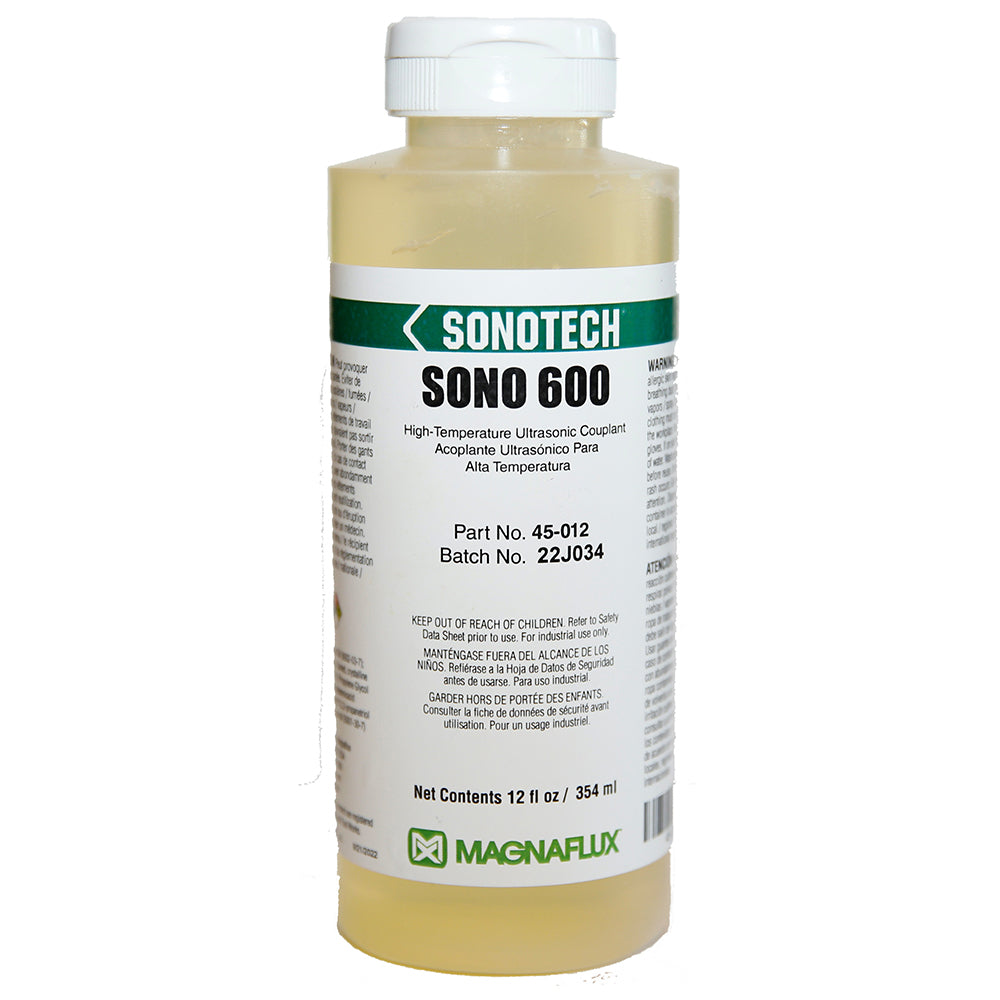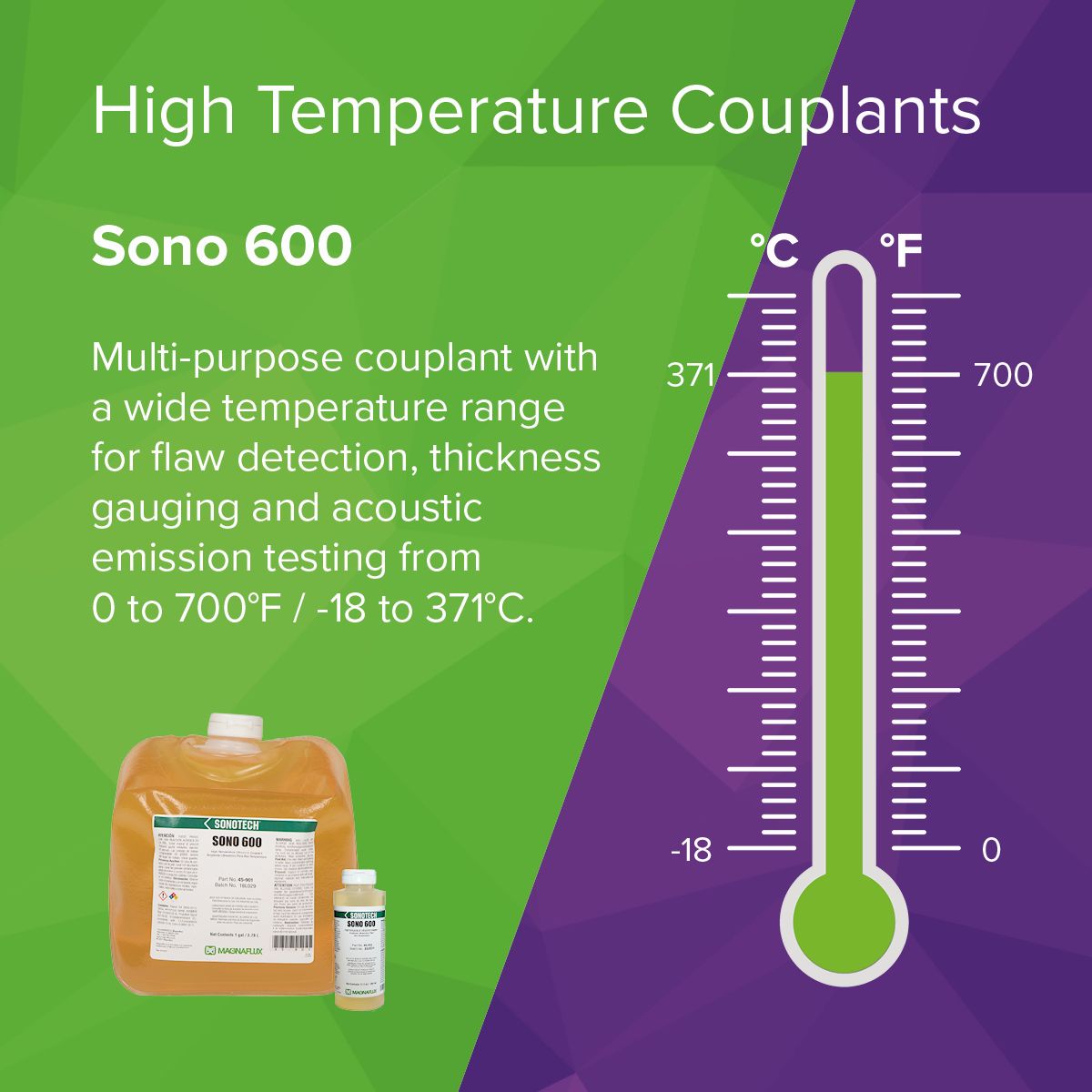


High-Temperature Ultrasonic Couplant
Experience unmatched versatility with this multi-purpose couplant, designed for a wide operating temperature range, making it ideal for flaw detection, thickness gauging, and acoustic emission testing across various industries including petrochemical, power generation, automotive, aerospace, food processing, and pharmaceutical manufacturing. With a recommended temperature range of 0 to 700°F / -18 to 371°C, it stands out as a reliable solution for high-temperature applications.
Benefits
- Economical high-temperature couplant
- Excellent corrosion inhibition
- Very slow drying for extended inspection time or long-term coupling
- Non-toxic, biodegradable formula
Use Recommendations
NDT Method: Ultrasonic Testing
Required Equipment: UT equipment, transducer
Temperature Range: 0 to 700°F / -18 to 371°C
Compatibility: Most composites and metals


